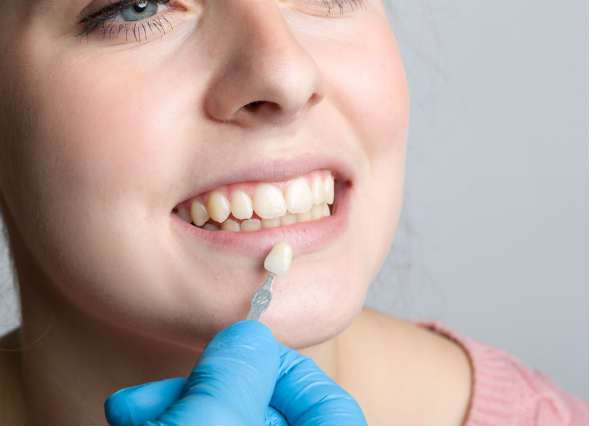No surprise that teeth-whitening is popular. It’s an industry estimated to be worth more than $10 billion per year globally. In fact, 88 percent of orthodontists report being asked about teeth whitening by their patients.
The most important piece of advice those dental professionals give in return? If you want whiter teeth you have to do it right and have realistic expectations.
How does teeth whitening work?
It seems strange that teeth stain. Dental enamel – the outer layer of your teeth – is the hardest part of your body. Lab tests prove a healthy human tooth is harder than iron, steel and most rocks (though much more brittle).
How do the stains even get in? Well, tooth enamel is actually porous. Even though the openings in the structure are microscopic, the stains still seep in over time. To break down the stains, tooth whitening compounds – usually a hydrogen peroxide preparation at low-concentration – must also penetrate the tooth. It is, in essence, a gentle and controlled bleaching process.
These whitening compounds are not dangerous if used properly, but they can make your teeth quite sensitive in the short term. Gum irritation is also common (but usually subsides quickly).
Note also that whitening agents do not actually remove the substances staining your teeth, they just remove the colour of the stain.
Another way to approach teeth whitening is through polishing that removes the surface layer of the stain. As this actually changes the physical structure of the tooth, a deep polish is something only a qualified dentist should do.
That said, all toothpastes are mildly abrasive and have a minor surface effect in polishing your teeth. This is more useful for maintaining your level of whiteness rather than improving it.
What is a shade of white?
A new shade of white occurs at the point a change in its darkness can be detected by the human eye. Take the common claim that a tooth whitening technique “can make your teeth 5 to 7 shades whiter in just 3 weeks”. If you took a photo of your teeth every day of the treatment, you wouldn’t need any more than 7 photos to see an accurate and entire record of progress. For the other photos, the degrees of change from the previous step would be too subtle to notice – and therefore not a new “shade” of white.
Are at home whitening kits just as good?
Because the tooth whitening industry is so large, commercial laboratories, beauty companies and dentists are always looking for ways to help people get the results they want.
Special toothpastes, whitening strips and multi-step DIY kits are readily available from your local pharmacy. Various home remedies containing things like lemon juice, bi-carb, coconut oil and charcoal might be as near at hand as your kitchen pantry.
While it’s hard to give general advice about such diverse set of approaches, the main thing to know is that results vary dramatically person to person – your teeth and the causes of your discolouration are different from anyone else’s.
Actually, we can say something else too. While (remarkably enough) many of these approaches do give minor results for some people, because of how tooth whitening treatments function (and the increasing risks of lay people using dentist-grade compounds) in-home approaches are slower and regulated to be less effective for the simple reason of safety.
Contrast this with the techniques used by dentists. These require advanced equipment, special compounds, good training and, most importantly, a better point of view. No matter what mirrors you use, it’s almost impossible to get a good look at your own teeth and keep the compounds away from your gums.
Will teeth whitening work for me?
As you’ve already read, tooth whitening through chemical and physical approaches works on stains in the outer layer of the tooth. Yet, as teeth are slightly see-through, discolourations of internal tooth structure can show up through a perfectly white outer layer.
Discolourations from other causes include:
• Physical damage (such as a blow to the mouth) which can affect soft tissues deep in the tooth and cause them to turn greyish
• Genetics – some people’s teeth are naturally disposed to be a shade approaching yellow
• Change in contrast between your complexion and tooth colour. As you tend to get less sun exposure in the cooler months, your skin will lose its tan and make your tooth colour more apparent.
You might not be a candidate for teeth whitening if you have certain medical reasons for not being able to use our whitening system, or if you have a ‘dark tooth’ which in essence has had nerve damage or ‘intrinsic’ damage such as that from chronic antibiotics use. In these cases, we recommend porcelain veneers to improve the appearance of your teeth.
Is tooth whitening for everyone?
Everyone’s teeth respond differently to different whitening procedures. Some people respond well to whitening toothpastes, while people with gray teeth or other serious discoloration may require porcelain veneers.
Only a dentist can give you the best advice and ensure you get the best results. After all, the quest for whiter teeth is one of the most common patient queries your dentist deals with.

